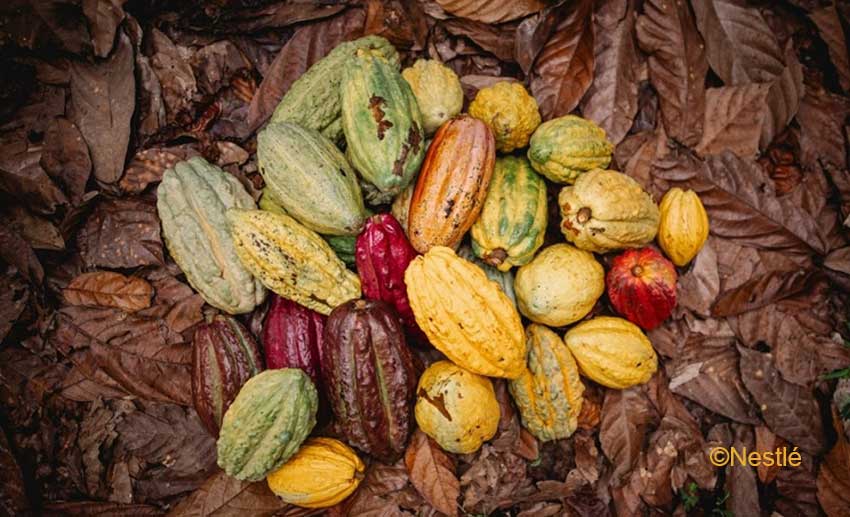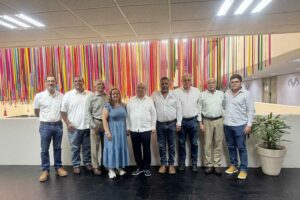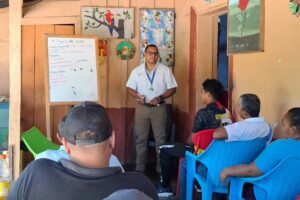Nestlé, together with leading research centers, maps the diversity of cacao plant varieties to protect the future of chocolate

- The research resulted in a base collection of plants that integrates more than 95% of global cacao genetic diversity.
Nestlé scientists, in collaboration with leading research institutions, have mapped hundreds of cacao plant varieties, creating a base collection composed of 96 varieties that represent more than 95% of global cacao genetic diversity.
The objective of the research is to help researchers and plant breeders more efficiently identify plants with desirable characteristics, such as climate resilience, tolerance to pests and diseases, higher yields, and sensory quality; thus strengthening a more resilient supply chain, improving crop performance, and supporting the livelihoods of farmers.
A base collection is a carefully selected group of plant varieties that represents the full range of genetic diversity present in a species. Its purpose is to allow experts to study a smaller and more representative sample of varieties without the need to maintain thousands of physical trees.
“Bringing together cacao genetic diversity from around the world into a well-preserved collection is like creating a kind of ‘Noah’s Ark’ of cacao diversity. This not only makes sense from a conservation perspective, but it will also allow us to discover key traits that can be used in breeding programs to protect the future of cacao,” said Jeroen Dijkman, Director of the Nestlé Institute of Agricultural Sciences.
Central America actively participated in this research thanks to CATIE (Tropical Agricultural Research and Higher Education Center), headquartered in Costa Rica, which provided access to one of the largest living cacao collections in the world, including several genotypes represented in this collection.

“At CATIE, we maintain a strong commitment to generating knowledge that supports the resilience and future of cacao systems globally. I am pleased that our research contributes to strengthening the conservation of cacao genetic diversity. This work represents a collaborative effort to provide the scientific community with more precise tools to protect and sustainably utilize cacao genetic resources,” stated Mariela Leandro, researcher at CATIE’s Agroforestry and Genetic Improvement of Coffee and Cacao Unit.
This research, published in BMC Genomics, also involved Pennsylvania State University (Penn State), which contributed several high-quality genome sequences generated by its renowned research program in Cacao Molecular Biology, Fox Consultancy, and Nestlé Research. The sequencing data are publicly available through the National Center for Biotechnology Information (NCBI) database, and the corresponding trees can be found at CATIE, Penn State, and other centers.
Patrick Descombes, Senior Expert in Genomics at the Nestlé Institute of Food Safety and Analytical Sciences, explained: “Cacao is a key ingredient in many of our products, especially chocolate. The fact that only a small percentage of the global cacao diversity is currently used in commercial production makes its supply chain more vulnerable. We leveraged cutting-edge genomic techniques, including deep sequencing of cacao tree genomes, advanced data analysis, and bioinformatics, to explore genetic similarities and differences in more than 300 cacao varieties and establish this base collection.”
In addition to this research, Nestlé is exploring innovative post-harvest solutions, such as a patented technique that uses underutilized parts of cacao pods, such as the pulp and placenta, to produce cacao flakes, increasing the added value of the fruit. The company’s sustainable sourcing program, known as the Nestlé Cocoa Plan, also plays a key role in sustainable cacao farming by partnering with farmers and organizations to improve agricultural practices, strengthen farmers’ livelihoods, and ensure responsible sourcing.
Nestlé’s Research and Development efforts are part of its commitment to strengthening the cacao supply chain by improving crop yields and farmers’ livelihoods, so that consumers can continue enjoying chocolate for many generations to come.

About Nestlé Central America
Nestlé is the world’s largest food and beverage company. It is present in 189 countries around the world, and its 328,000 employees are committed to Nestlé’s purpose of enhancing quality of life and contributing to a healthier future. Nestlé offers a wide portfolio of products and services for people and their pets throughout their lives. Its more than 2,000 brands range from global icons such as Nescafé or Nespresso to local favorites such as Maggi, Nido, and Malher. The company’s performance is driven by its Nutrition, Health and Wellness strategy. Nestlé is headquartered in the Swiss city of Vevey, where it was founded more than 150 years ago.
In Central America, Nestlé has been present for more than 85 years. It operates 3 production plants, 6 distribution centers, and a regional headquarters. Currently, the company employs more than 4,300 collaborators in the region and works with more than 2,000 suppliers of raw materials, packaging, and indirect materials. Nestlé is present in the daily lives of thousands of people, accompanying them at every stage of life. For more information, we invite you to visit:www.nestlé-centroamerica.com
More information/written by:
Elizabeth Valverde
Corporate Affairs & Sustainability Lead CAM
Nestlé Costa Rica S.A.
Tel. + 506 7023-1565
elizabeth.valverde@cr.nestle.com



